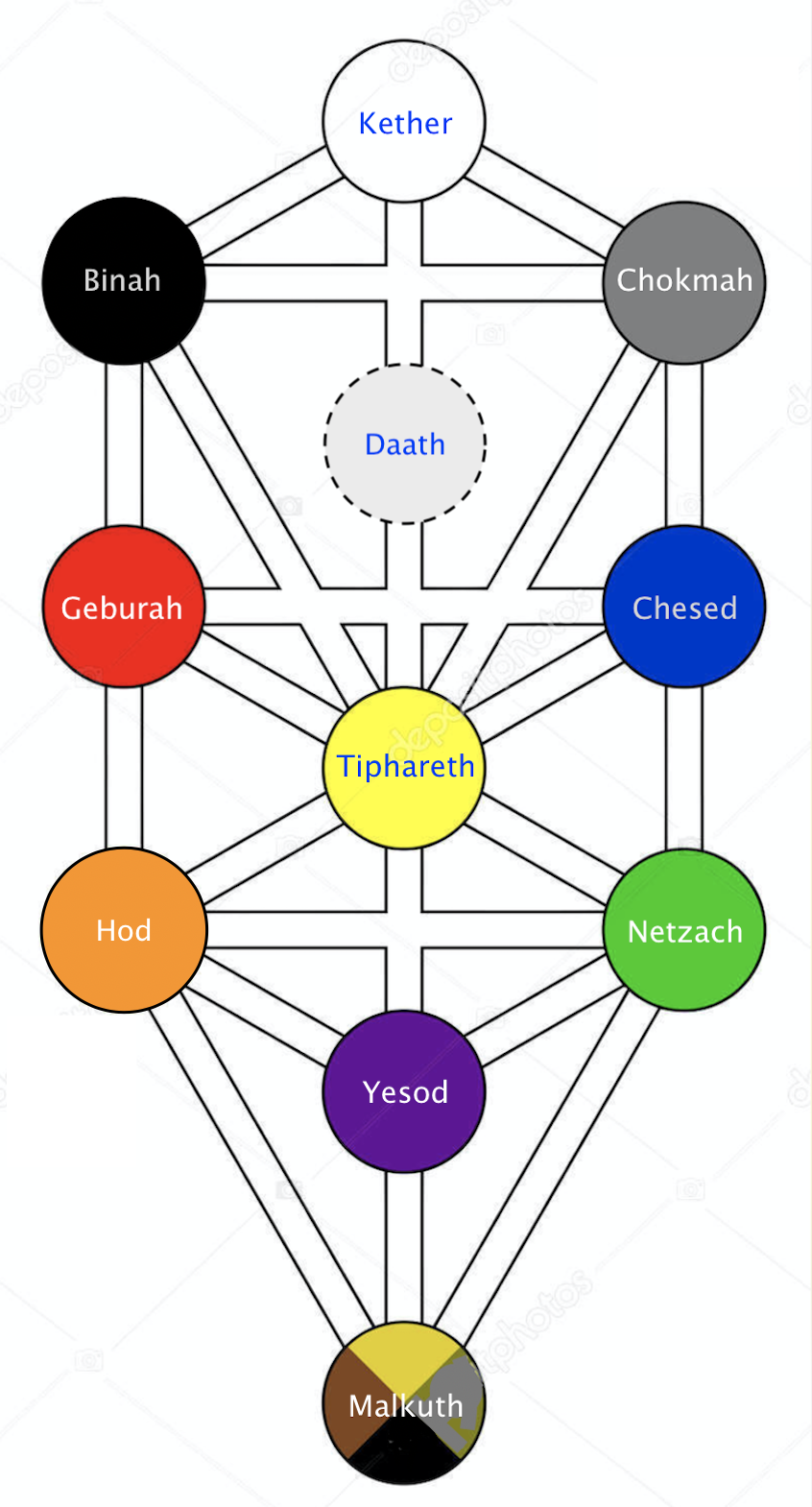The Kabbalah, the Tarot and the Middle Way
Kenneth Chan
2. A Path of Verification

Taking the spiritual path on the Tree of Life means transforming our personality; it means changing our attitude, perspective, motivation and approach to life. It is not a path about the mere gaining of knowledge, of having visions concerning the workings of the universe or of God. It is much more. It is a path of evolution of our being, not one travelled by merely contemplating passively on the Tree. To travel the path means to live it. And it involves nothing short of a transformation of our life, a total commitment. Neither the Buddha nor Jesus would ask for anything less. Herein lies the profundity of the message. And herein lies the way to salvation.
The Tree of Life is a path of verification. It is a path of unfolding realization, of higher and higher stages of revelation, as we proceed upward. It is a route where we continually confirm that we are going in the right direction, because the view gets clearer and clearer the higher we go. We always know the next step when we are ready to take it. Otherwise, we are probably not yet ready for that step. We never have to take a path on faith alone; so blind faith is not necessary. All we need initially is just sufficient drive for the effort to verify for ourselves the truth contained there. It is, however, necessarily a path where we have to accept truth when it finally stares us in the face. This nature of the spiritual path is well illustrated by a Theravada Buddhist text known as the Kalama Sutta.
In the Kalama Sutta, the Buddha is presented with a problem confronting the Kalama people, the problem of what beliefs to adopt. As they relate to the Buddha, there were numerous monks and brahmins who visited their town, Kesaputta, each expounding and explaining only their own doctrine while despising and reviling the doctrine of others. Who were they then to believe? To those thinking that religion means blind faith, the Buddha’s reply, given below, will be a revelation:
It is proper for you, Kalamas, to doubt, to be uncertain; uncertainty has arisen in you about what is doubtful. Come, Kalamas. Do not go upon what has been acquired by repeated hearing; nor upon tradition; nor upon rumour; nor upon what is in a scripture; nor upon surmise; nor upon an axiom; nor upon specious reasoning; nor upon a bias towards a notion that has been pondered over; nor upon another’s seeming ability; nor upon the consideration, “The monk is our teacher.” Kalamas, when you yourselves know: “These things are bad; these things are blamable; these things are censured by the wise; undertaken and observed, these things lead to harm and ill,” abandon them.
And as to what to accept, the Buddha advises:
Kalamas, when you yourselves know: “These things are good; these things are not blamable; these things are praised by the wise; undertaken and observed, these things lead to benefit and happiness,” enter on and abide in them.
The key point in the Buddha’s advice here lies in the word “know.” We abandon what we know should be abandoned. And we adopt what we know should be adopted. In other words, we act on what we know. There is no need for blind faith. The next step that we know (without any doubt whatsoever) that we have to take, to become a better person, is what our Master within, our Buddha nature, our inner Guru, or the kingdom of heaven within us, is telling us to do. We have to heed this inner voice and align ourselves with it.
When we have accomplished what we know should be done, we will always know the next step. It is like climbing a mountain. The view gets clearer and clearer as we reach higher and higher ground—the way to proceed, the next step, always becomes evident. If we act and take each next step when we know it should be taken, we will eventually reach the top of the mountain. The key then is to act on what we know. This same principle is explicitly emphasized on the Tree of Life, as we shall see. Thus, the spiritual path is based on a personal scientific process of verification through direct experience.
It is important, also, to understand here that while this map of the spiritual path outlines the stages of the spiritual quest, a mere intellectual understanding of the steps required is very different from a direct experience of it. In order to actually progress on the spiritual path, we need to live and breathe it, and experience it within the depths of our being. It entails a total transformation of our being so that we are attuned to the truth not merely intellectually but with every aspect of our being—our attitudes, aspirations, thoughts, actions, etc. In other words, our heart and our entire being has to be fully attuned to the truth so that we essentially become it.
Copyright © 2021 by Kenneth K C Chan. All Rights Reserved.